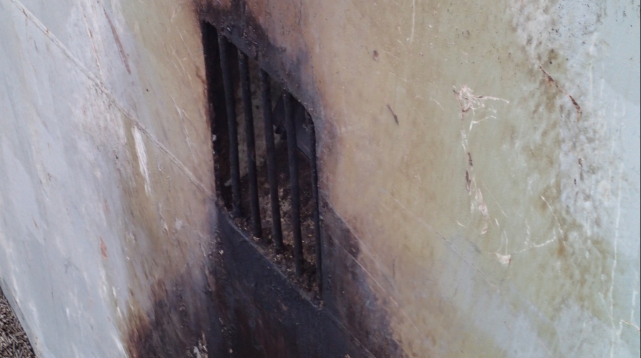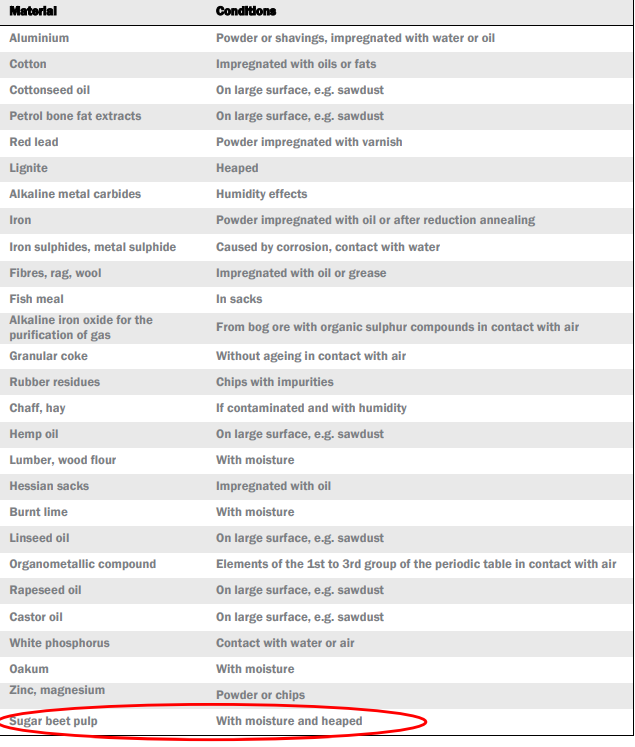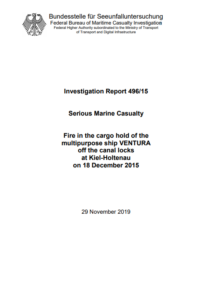The Federal Bureau of Maritime Casualty issued an investigation report on vessel “Ventura”, to look for the causes that resulted to the vessel’s cargo tanks and cargo being burnt down, highlighting that sugar beep pulp is prone to ignition when moistured and heaped.
Specifically, the Antigua and Barbuda-flagged multipurpose vessel called “Ventura” began its journey from Liepaja in Latvia heading to Casablanca in Morocco on December 18, 2015.
The vessel was transmitting about 4,811 mt of sugar beet pulp with no added molasses. The vessel sailed by the Kiel lighthouse at 11.00, and at 12.00 smoke was noted onboard the vessel and triggering the fire alarm.
Following, the regional vessel traffic service was immediately informed, which then assigned the vessel to an emergency mooring off Vossbrook on the Kiel Firth.
The Kiel Fire Service deployed a firefighting unit to assess the situation and investigate the causes. The Central Command for Maritime Emergencies (CCME) was additionally notified by the Waterway Police (WSP) and handled the situation.
The vessel sailed rapidly to Kiel Ostuferhafen port at 21.00, where it partly unloaded the cargo onto the pier using the port’s dredger and extinguished there by the Kiel Fire Service.
The investigation revealed that both the cargo hold and cargo were damaged by the fire incident.
BSU concluded that
It is not possible to clearly determine the cause of the fire. However, there is a reason to believe that the cargo’s maximum moisture content was partially exceeded due to the effect of rain when sugar beet pulp was loaded from the open troughs.

Safety recommendations:
The federal bureau of marine casualty investigation recommends that:
- The owner of the vessel should advise the masters and chief officers of the importance to comply with the regulations according to the IMSBC Code.
- The owner should advise the ship’s command to the effect that if solid bulk cargo is loaded from open thoughts or the like, which are not protected ashore from any type of precipitation, new samples must be taken in respect of the moisture content and that parts of the cargo must be excluded from loading if required limit values are not met.
- The owner should consult its ship’s command that the niches in which cargo hold lights are located should be sealed when loading solid bulk cargo, so that it can not pass through their protective grating and come into direct contact with the lights.

To learn more on the investigation report click herebelow































































